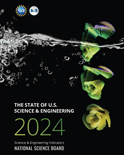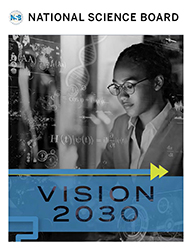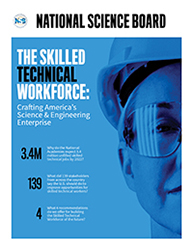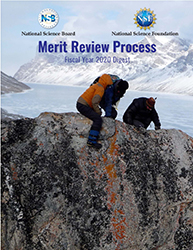International Science and Engineering Partnerships: A Priority for U.S. Foreign Policy and Our Nation's Innovation Enterprise

|
Document Number: nsb0804
Author: National Science Board Published: February 14, 2008 Keywords: International Partnerships, U.S. Foreign Policy, Science and Engineering Partnerships, Science Diplomacy, Economic Competitiveness Available Formats: HTML | PDF Related Documents |
||
|
Abstract The first decade of the 21st century has shifted the global landscape of science and engineering (S&E) related to research, education, politics, and the technical workforce. Effective international S&E partnerships advance the S&E enterprise and energize U.S. innovation and economic competitiveness, but they also have great potential to improve relations among countries and regions and to build greater S&E capacity around the world. The U.S. is no longer the unquestioned leader in certain S&E fields, such as national cyber-infrastructure networking, and must increasingly rely on and learn from other countries. Centers of excellence are also emerging around the world at the forefront of new S&E developments. To remain competitive, the U.S. must no longer assume that it has a leading role in S&E; rather, it must actively strengthen its engagement in the global movement to work together on the frontiers of S&E. The National Science Board (Board) urges the U.S. Government to create a coherent and integrated U.S. International S&E Strategy, balance U.S. Foreign and R&D Policy, and promote intellectual exchange. U.S. leadership in international S&E partnerships is truly one of the key ingredients to global prosperity. Executive Summary The first decade of the 21st century has shifted the global landscape of science and engineering (S&E) related to research, education, politics, and the technical workforce. New security threats, globalization, and the rapid increase in health and environmental challenges have generated a need to reassess the U.S. Government's role in international S&E and diplomatic institutions. The U.S. Government needs to adapt rapidly to these changes so that our economy remains competitive, our national security remains sound, and our valuable resources are utilized effectively and efficiently in support of discovery and innovation. A critical mechanism for achieving U.S. goals in this development is international S&E partnering to serve new diplomatic purposes. Effective international S&E partnerships advance the S&E enterprise and energize U.S. innovation and economic competitiveness, but they also have great potential to improve relations among countries and regions and to build greater S&E capacity around the world. The most recent notable change in global S&E dynamics occurred after September 11, 2001, when new security restrictions hindered the flow of ideas, knowledge, and researchers across borders. Visa restrictions prevented many foreign researchers from entering the U.S. to participate in research studies and scientific conferences. Decreases in foreign student enrollments from 2001 through 2005 were partly due to difficulties obtaining U.S. visas. Export controls and restrictions on technology sharing dampened incentives for international researchers to participate in U.S.-led research initiatives. While foreign student enrollments have begun to increase again, these factors have made locations other than the U.S. more appealing for supporting cutting-edge innovation in S&E. A second factor influencing shifts in the global S&E landscape is globalization - the growing interdependence and integration of global economic, social, technological, cultural, and political spheres. The U.S. is no longer the unquestioned leader in certain S&E fields, such as national cyber-infrastructure networking, and must increasingly rely on and learn from other countries. Centers of excellence are also emerging around the world at the forefront of new S&E developments. To remain competitive, the U.S. must no longer assume that it has a leading role in S&E; rather, it must actively strengthen its engagement in the global movement to work together on the frontiers of S&E. A third factor influencing shifts in the global S&E landscape is the global nature of many societal challenges. These challenges include: building more secure national infrastructures in the wake of terrorist threats and actions; increasing national capacity and disseminating technology to underdeveloped and developing countries; preventing environmental change and degradation, especially global climate change; improving weather forecasting to improve the response to catastrophic natural disasters; and diminishing the threat of widespread health epidemics such as AIDS. The next generation of scientists and engineers will need to lead the world in combating these global problems. Advances in S&E will increasingly depend on the ability to draw upon the best minds regardless of national borders. U.S. efforts to build S&E capacity in developing countries will advance U.S. diplomacy throughout the world. In particular, the U.S. Government must harness the power of international S&E partnerships to strengthen science diplomacy and foster capacity building in developing countries. For such partnerships to achieve their full potential, there must be short-term and long-term mutual benefits and shared risk. The National Science Board (Board) urges the U.S. Government to undertake the recommended actions stated in the Strategic Priorities section of this report immediately. The Board also offers guidance to the National Science Foundation (NSF), which is interspersed throughout the Strategic Priorities section under the sub-heading "Guidance for NSF." The recommended actions of this report are summarized below.
Accountability must be an integral part of planning successful collaborations to assure supporters that research integrity is a priority and that funds are used appropriately. Strengthening scientific capacity and promoting the free flow of information in developing countries will not only expand their S&E enterprises, but will help those countries attain a higher quality of life by supporting greater social stability. The U.S. Government needs to support successful international S&E partnerships as necessary tools to address critical global challenges and the new dynamics of S&E, to build S&E capacity and expertise, to energize U.S. innovation, to support international relations, and to foster capacity building in developing countries. U.S. leadership in international S&E partnerships is truly one of the key ingredients to global prosperity. Related Documents
|
|||





